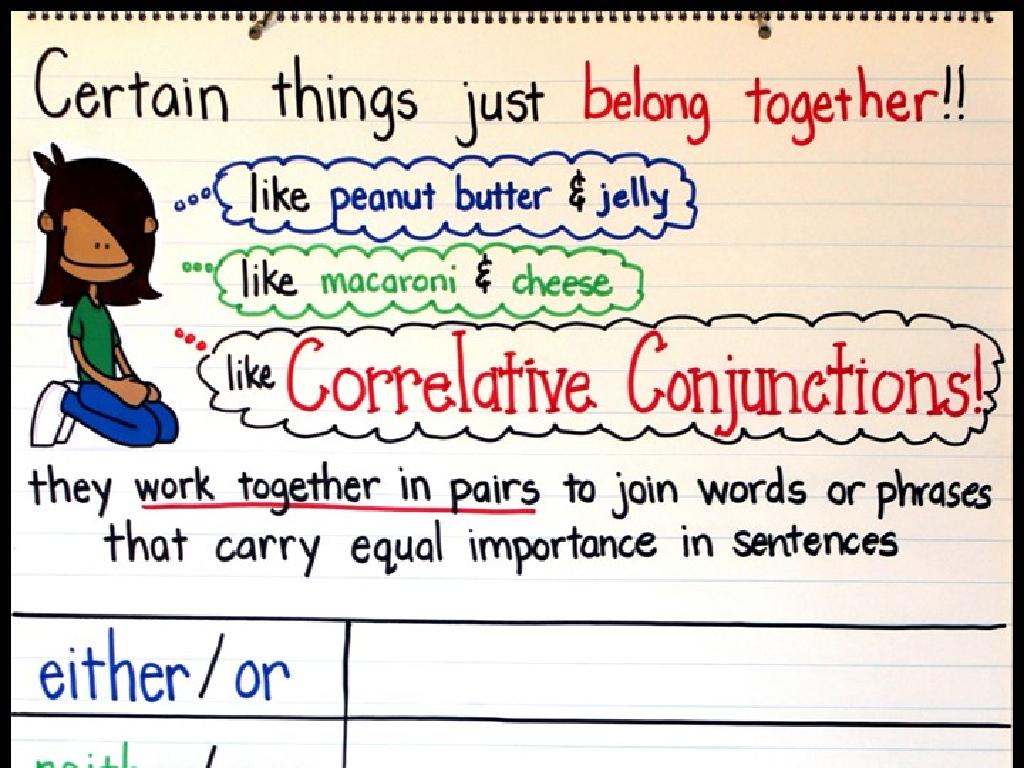The Early Republic (1800-1848)
Subject: Arts and humanities
Grade: High school
Topic: Us History
Please LOG IN to download the presentation. Access is available to registered users only.
View More Content
Exploring the Early Republic (1800-1848)
– Overview of the Early Republic era
– A transformative era following the American Revolution, setting the stage for growth.
– Post-Revolutionary America
– The nation grappled with its newfound independence and the challenges of governance.
– Expansion during this period
– Manifest Destiny spurred westward expansion, impacting Native American lands and relations.
– Political and social dynamics
– The era was marked by the rise of political parties and evolving societal norms.
|
This slide introduces students to the Early Republic period of the United States, a time of significant growth and change following the American Revolution. It’s crucial to highlight the optimism of the era, characterized by the concept of Manifest Destiny and the expansion of territory. Discuss the complexities of post-Revolutionary governance, including the establishment of new political systems and parties. Address the societal shifts that occurred, including changes in the roles and rights of different groups within the expanding nation. Encourage students to consider how these themes of expansion, politics, and society are interconnected and how they laid the foundation for the modern United States.
Post-Revolution America: Establishing the Nation
– The Federalist Era: New government
– Period marked by the establishment of federal government and institutions
– Influence of the first four presidents
– Washington, Adams, Jefferson, and Madison shaped the executive role and policies
– Challenges of the young nation
– Foreign conflicts, internal disputes, and economic issues tested the nation
– Resilience in early US history
|
This slide aims to provide an overview of the formative years of the United States following the American Revolution. The Federalist Era was a critical time when the foundations of the American government were laid, including the creation of the Constitution and the Bill of Rights. The first four presidents George Washington, John Adams, Thomas Jefferson, and James Madison played pivotal roles in shaping the executive branch and setting precedents for future leaders. They faced numerous challenges, such as the Whiskey Rebellion, conflicts with Britain and France, and the War of 1812. Despite these hurdles, the resilience of the early republic set the stage for the nation’s growth and expansion. Encourage students to explore how each president contributed to the nation’s early development and how they dealt with the challenges they faced.
The Louisiana Purchase: Expansion of the United States
– Acquisition of Louisiana Territory, 1803
– Doubled the size of the U.S., bought from France for $15 million
– President Jefferson’s pivotal role
– Jefferson’s decision despite constitutional concerns expanded U.S. territory
– American expansion and its effects
– Opened vast lands for settlement and agriculture, fueling westward movement
– Consequences for Native American tribes
– Displacement and cultural impact on indigenous populations
|
The Louisiana Purchase was a landmark event in American history, significantly altering the nation’s size and political landscape. President Thomas Jefferson, despite initial concerns over constitutional authority, orchestrated the purchase from France for $15 million, effectively doubling the size of the United States. This acquisition paved the way for American expansion, promoting the ideal of Manifest Destiny and the westward movement of settlers. However, this expansion had profound and often devastating effects on Native American tribes, leading to displacement and loss of cultural heritage. The slide should emphasize the complexity of the purchase’s impact on the country’s development and its indigenous peoples.
The War of 1812: Catalyst for American Nationalism
– Causes of the War of 1812
– Tensions with Britain over trade, impressment, and frontier conflicts
– Key battles and their outcomes
– Notable battles: Battle of New Orleans, Battle of Baltimore, and their significance
– Surge in American nationalism
– Heightened sense of national unity and identity post-war
– Impact on U.S. foreign policy
– Shift towards isolationism, Monroe Doctrine as a defining policy
|
This slide aims to encapsulate the pivotal moments and consequences of the War of 1812. The war’s causes included ongoing trade restrictions imposed by Britain, the forced recruitment of American sailors into the British navy, and territorial disputes. Key battles such as the Battle of New Orleans, which was a significant American victory, and the Battle of Baltimore, which inspired the ‘Star-Spangled Banner,’ are crucial to discuss. The war’s end marked an increase in American nationalism, with the country gaining international respect and a stronger national identity. In terms of foreign policy, the United States began to pursue a more isolationist stance, culminating in the Monroe Doctrine, which warned European powers against further colonization in the Americas. Encourage students to consider how these events shaped the emerging nation’s identity and policies.
The Era of Good Feelings: National Unity and Growth
– Period of unity and cooperation
– Post-war nationalism led to a sense of unity and political harmony.
– The Monroe Doctrine’s role
– A cornerstone of U.S. foreign policy, opposing European colonialism in the Americas.
– Economic expansion in the era
– Advancements in technology and infrastructure fueled economic growth.
– The American System’s impact
– A plan to strengthen and unify the nation, promoting a self-sufficient economy.
|
This slide delves into the ‘Era of Good Feelings,’ a time when the United States experienced a surge in national pride and political consensus following the War of 1812. Highlight the Monroe Doctrine as a pivotal foreign policy declaration that deterred European interference in the Western Hemisphere. Discuss the economic boom driven by innovations and the development of transportation networks. Explain the American System, proposed by Henry Clay, which aimed to support the economy through a national bank, protective tariffs, and internal improvements. This era set the stage for the country’s expansion and the complex interplay between regional interests and national identity.
The Age of Jackson: Populism & Controversy
– Jackson’s ‘common man’ presidency
– Championed the rights of the ‘common man’, opposed elite monopolies
– The Bank War controversy
– Jackson’s battle against the Second Bank of the U.S., viewed as overreach
– Indian Removal Act and its impact
– Forced relocation of Native Americans, Trail of Tears as a tragic result
– Formation of the modern Democratic Party
– A political shift embracing Jacksonian democracy, shaping future politics
|
Andrew Jackson’s presidency marked a shift towards a more populist approach, appealing to the ‘common man’ and challenging the established political and economic institutions. His stance against the Second Bank of the U.S. led to the Bank War, a significant controversy of his time. The Indian Removal Act, another major aspect of his presidency, resulted in the forced displacement of Native Americans, leading to the infamous Trail of Tears. These events also played a role in the birth of the modern Democratic Party, which realigned political forces around the ideals of Jacksonian democracy. This slide aims to provide students with an understanding of the complexities of Jackson’s presidency and its long-term effects on American politics.
Social Reforms and Cultural Flourishing: 1800-1848
– The Second Great Awakening
– A religious revival that emphasized individual faith and community.
– Key Social Movements
– Abolition, Women’s Rights, and Education reform shaped societal change.
– Advances in Literature and Art
– A period of rich literary and artistic expression reflecting American themes.
– Scientific Progress in the Early Republic
– Innovations and discoveries marked a time of intellectual growth.
|
This slide delves into the transformative period of the early 19th century in the United States, marked by a surge in religious fervor known as the Second Great Awakening. This movement played a crucial role in inspiring social reforms, including the abolition of slavery, the fight for women’s rights, and the push for universal education. Additionally, this era witnessed a renaissance in American literature, art, and science, with cultural works and scientific advancements that reflected a growing national identity and intellectual independence. Encourage students to explore how these social and cultural developments were interconnected and how they contributed to the shaping of modern American society.
Westward Expansion: Manifest Destiny
– Concept of Manifest Destiny
– Belief that U.S. expansion was justified and inevitable.
– Effects on Native Americans
– Displacement and cultural impact on indigenous tribes.
– Mexican-American relations
– Tensions and territorial changes post-Texas annexation.
– The Oregon Trail & Gold Rush
– Migration routes and the search for prosperity in the West.
|
This slide delves into the period of Westward Expansion under the belief of Manifest Destiny, which held that American settlers were destined to expand across North America. Discuss the impact of this expansion on Native Americans, including forced removal and conflicts, and on Mexican-American relations, particularly after the annexation of Texas and the Mexican-American War. Highlight the Oregon Trail as a key migration route and the California Gold Rush as a significant event that spurred mass migration and economic growth. Use this slide to prompt a discussion on the ethical implications of expansion and its long-term effects on the United States’ landscape.
Class Activity: Debating the Early Republic
– Divide into groups for debate
– Choose a topic from the lesson
– Prepare arguments with historical views
– Consider perspectives of Federalists, Democratic-Republicans, or other key groups from the era
– Present and debate in class
– Use evidence from today’s lesson to support your arguments
|
This activity is designed to deepen students’ understanding of the Early Republic by engaging them in a debate from different historical perspectives. Students will divide into groups and select a topic from today’s lesson, such as the Alien and Sedition Acts, the Louisiana Purchase, or the War of 1812. They will then prepare arguments representing different viewpoints from the era, considering the perspectives of Federalists, Democratic-Republicans, or other relevant groups. Encourage students to use primary sources and evidence from the lesson to support their arguments. This activity will help students develop critical thinking and public speaking skills while fostering an appreciation for the complexity of historical events and viewpoints.






